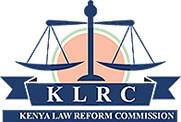In any organization, effective complaints handling is essential for maintaining transparency, accountability, and client satisfaction. The Kenya Law Reform Commission (KLRC) is no exception. This article aims to provide a comprehensive overview of KLRC's complaints handling procedure, outlining the steps taken to address grievances and improve the overall service delivery.
KLRC's Commitment:
The KLRC is committed to ensuring that its stakeholders have a reliable mechanism to voice their concerns, whether they are related to the Commission's services, staff conduct, or any other aspect of its operations. The complaints handling procedure is designed to foster an open and responsive environment, where feedback is not only welcomed but actively sought after for continuous improvement. All complaints are accorded outmost confidentiality.
Key Components of KLRC's Complaints Handling Procedure:
- Accessibility:
- KLRC ensures that information about the complaints handling procedure is readily available and accessible to all stakeholders.
- Complaint tool is embedded on the official website.
- Submission of Complaints:
- Stakeholders can submit complaints through various channels, including online submission forms, email, written letters, or in-person at KLRC offices.
- Initial Acknowledgment and Assessment:
- All claims are acknowledged where the sender’s address is provided immediately.
- Upon receiving a complaint, the KLRC conducts an initial assessment to determine the nature and severity of the issue and give priority for action.
- The assessment helps in categorizing complaints for appropriate handling and resolution.
- Acknowledgment and Tracking:
- A formal acknowledgment is sent to the complainant, providing a reference number for tracking purposes.
- Complaints are systematically tracked throughout the resolution process to ensure timely and effective handling.
- Investigation and Resolution:
- Depending on the nature of the complaint, KLRC may conduct an internal investigation where all facts are recorded. The issue is then forwarded to relevant commission organ for direction
- The resolution process may involve corrective actions, policy adjustments, or other measures to address the issue raised.
- Response and Follow-up:
- Once the resolution is implemented, KLRC communicates the outcome to the complainant where an address was provided.
- Continuous feedback is encouraged, and follow-up actions are taken to monitor the effectiveness of the resolution.
- Reporting, Analysis and monitoring:
- After the remedial action has been taken a follow up is done to detect any recurrent
- Regular reports on complaints are generated, providing insights into common issues and areas for improvement.
- The analysis of complaints data informs strategic decisions and helps KLRC proactively address emerging concerns.
Conclusion:
KLRC's commitment to an effective complaints handling procedure reflects its dedication to maintaining high standards of service delivery and accountability. By actively engaging with stakeholders through this process, KLRC ensures that grievances are addressed promptly, contributing to the overall enhancement of its operations and services. Through transparency and responsiveness, KLRC continues to build trust with its stakeholders and foster a culture of continuous improvement.
Complaints handling process
